Understanding Water Quality:
Wild Water Wisdom Workshop Photos
Understanding water class description
The participants were fifteen mentors and organizers from the Wilderness Youth Project. Wilderness Youth Project uses nature as a metaphor for catalyzing personal and community growth. They teach about survival, including shelter and wild foods. The purpose of this workshop was to deepen mentors' understanding of the workings of natural water and nutrient cycles, so they can teach how to find clean water to drink, and avoid sullying water when washing or eliminating in the wild. WYP has a great culture around learning and togetherness, which was woven into this event. The Eight Shields Organizational Model, for instance, ensures that all the wildly different energies needed for a successful event — from inspiration to detail orientation — are attended to. Water is complex and multifaceted. It is best understood by looking at it from all sides, which is what we did on this trip... |
At the creek we gathered into a circle, and invited a "oneness of mind" for the group to learn about water. I pointed out that to people who don't know the fauna, the forest looks like one undifferentiated wall of green. But if you know the local plants, you see dozens of distinctly different ones, each with their own characteristics. The same is true for water. To people who don't understand it, it all looks like the same stuff. But as you get to know it, in your mind's eye you can "see" that the water is different every inch, and every minute, sometimes radically so. Then I said: "From where we're standing, we can see at least four totally different kinds of water. I'd like you each to walk individually, in silence, up the creek, tuning into the water. In particular, I'd like you to look for the water you'd feel best about drinking—but don't drink it yet!" |
|
(Would you drink this water? Lots of people liked the look of the water coming from under the rock) |
When we got to the pools, people swam across, |
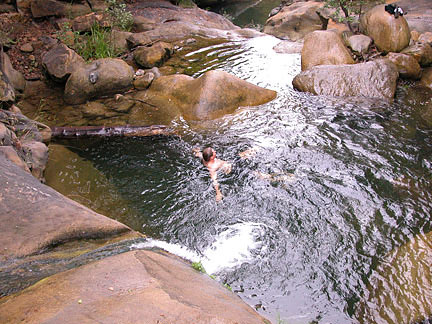 |
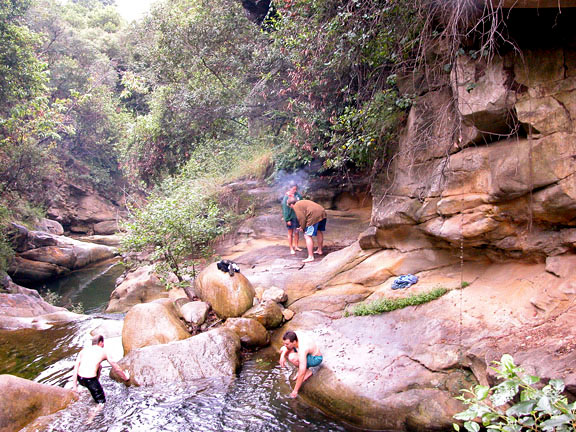 |
And we smudged them when they got to the other side... |
We made a circle. Each person said their name, the water they would have drunk, and why. |
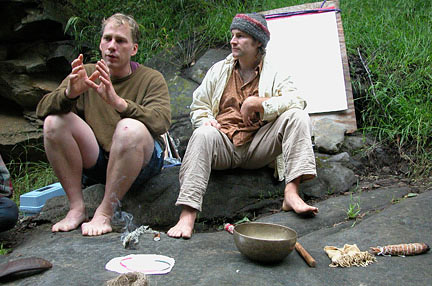 |
The piles of stuff represent the dissolved solids in 1 liter of water, the cylinder volumes the dissolved gasses. The graph shows the stuff too. At intervals, we'd look up and see what it looked like in real life... |
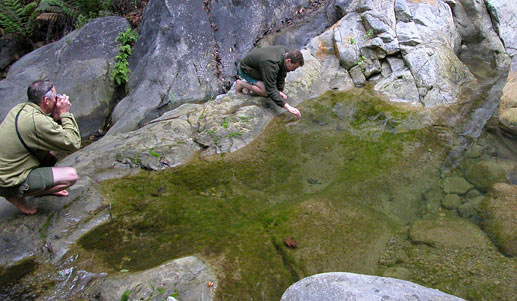 |
Then we went over sample collection technique, and started collecting samples of people's preferred waters for testing, as well as any kinds of water people missed. |
The location of each sample was photographed. |
 |
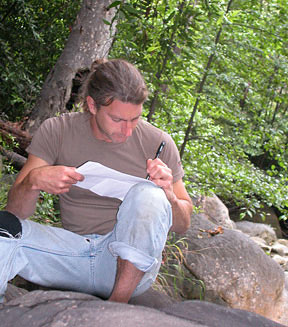 |
The temperature, turbidity, dissolved solids, and appearance of the water were all recorded as well, on data entry forms from Water testing-download. |
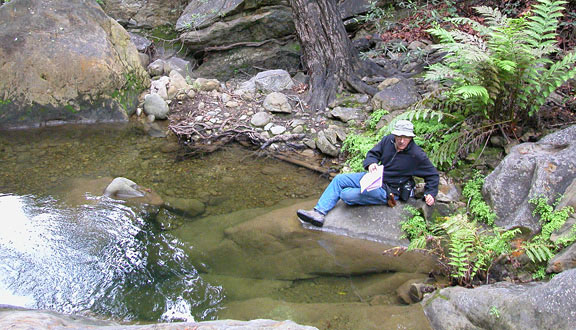
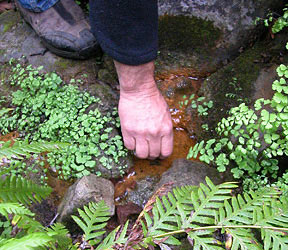 |
The photos above and at left show one of the places where there are totally different waters within inches of each other: an iron-rich (orange color) spring next to a clear pool. |
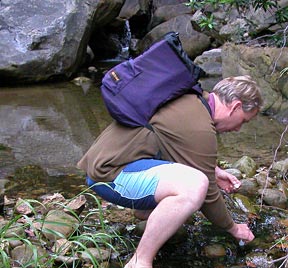
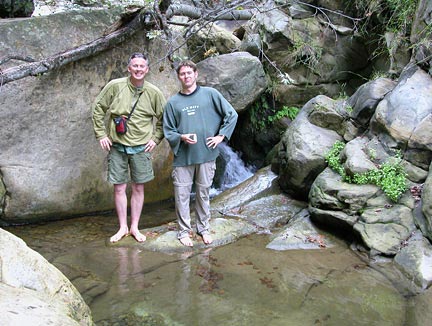
This is the water that tested the cleanest for general and fecal coliforms; it was from a hole dug at the downstream end of a sand bar, which functions as a sand filter. |
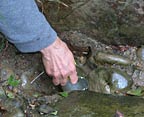 |
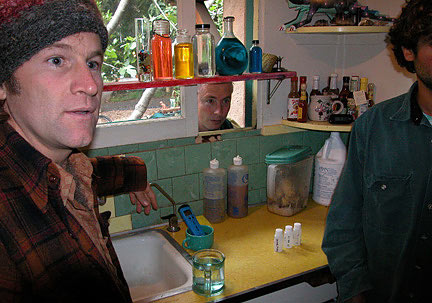 |
Back at my house, we grabbed samples of one of every water that caught our interest: tap water, reverse osmosis-filtered water (the one I'm pointing to)... |
Rain water caught in my kid's wading pool... |
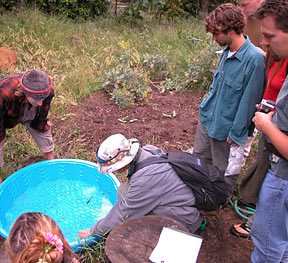 |
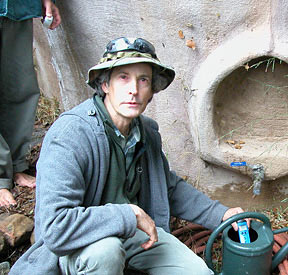 |
Our rainwater cistern... |
48 hours later we counted the general and fecal coliform bacteria colonies that had grown... |
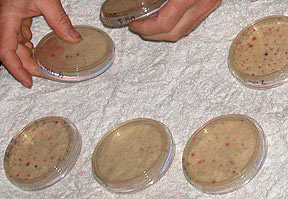 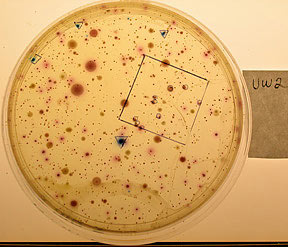 |
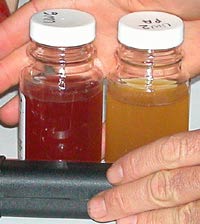 |
Checked the presence-absence test results...entered everything in a spreadsheet, and discussed and synthesized what we'd learned... |

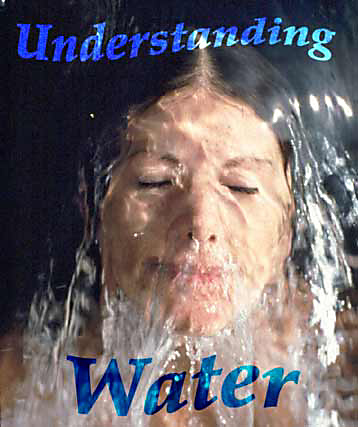
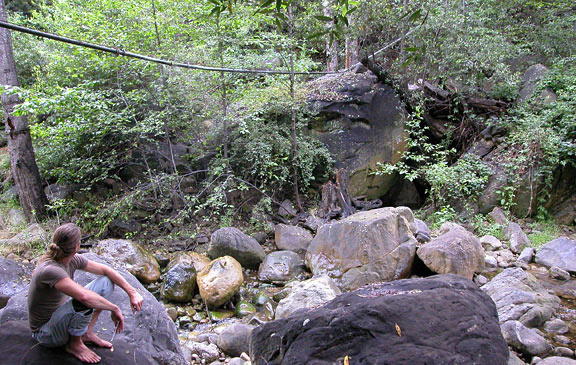 Everyone showed up packed in one van, then we walked to the creek.
Everyone showed up packed in one van, then we walked to the creek. 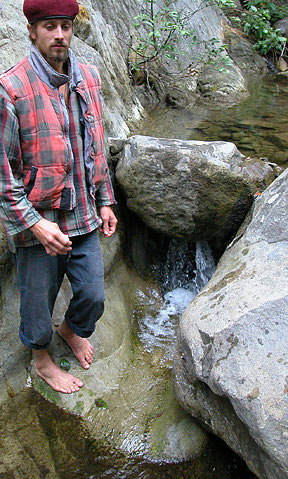
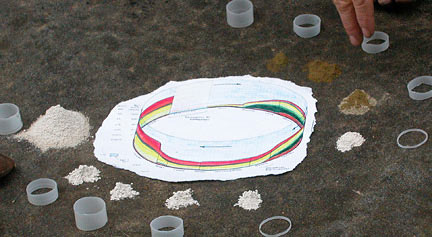 Then we discussed the way that water changes in quality as it moves from Ocean (9:00 position on the cycle at left) to Atmosphere (12:00), Plant Leaves, Leaf Litter, Topsoil, Subsoil (3:00), Groundwater, Springs, Creeks, and Estuaries.
Then we discussed the way that water changes in quality as it moves from Ocean (9:00 position on the cycle at left) to Atmosphere (12:00), Plant Leaves, Leaf Litter, Topsoil, Subsoil (3:00), Groundwater, Springs, Creeks, and Estuaries.